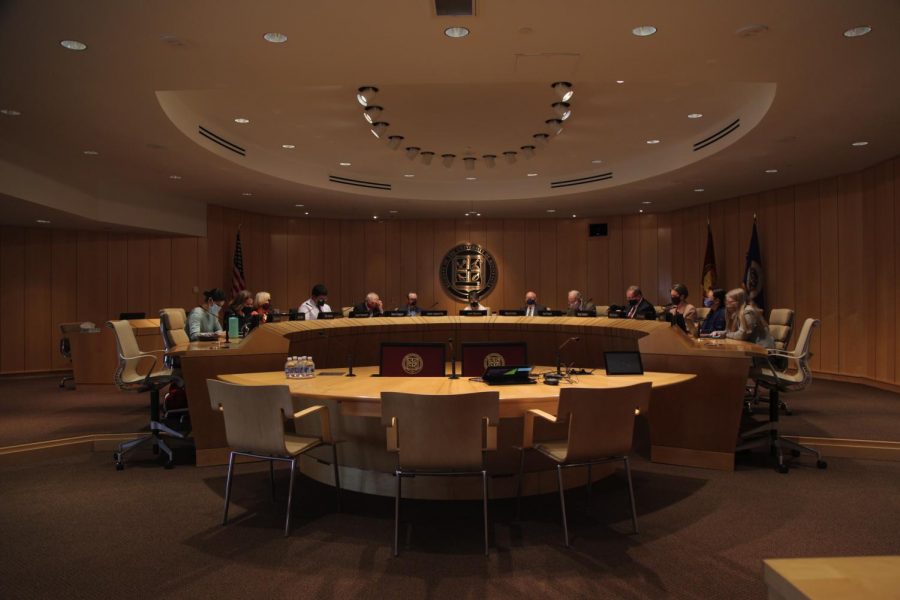The University of Minnesota Board of Regents weighed in on President Joan Gabel’s proposed biennial budget request for the 2024-25 school year in their meeting on Thursday, raising questions concerning funding for financial aid-based scholarships and spending on campus public safety.
The proposal outlines funding the University needs from the state in 2024 and 2025. The University’s new request is $90 million higher for the year 2025 than it was for this academic year. The main areas of focus in the budget include the Promise Program, the Greater Minnesota Scholarship and public safety across all University campuses.
While many regents expressed their support for the proposal, others voiced skepticism about its sources for funding, including the board’s vice chair, Steven Sviggum.
“I strongly support the president’s budget proposal, but we need to enter this with eyes wide open,” Sviggum said in Thursday’s meeting. “The cost will probably be on the back of tuition more than cost savings, and you are looking at something at a 6-8% tuition increase. Don’t come next May when we get to the president’s final budget and say you are surprised.”
The proposal allocates $30 million to the Promise Program and the Greater Minnesota Scholarship. Both programs provide tuition assistance to students across all campuses, ranging from $300 to $4,000 for individuals that meet the maximum household income requirement, which raised concerns about how the University should fund these programs.
“I fully support the intent of the Promise scholarship, but I believe it should come from philanthropy,” Regent Darrin Rosha said at Thursday’s meeting. “I never supported the concept that we are expecting student A to fund student B … I would much rather see that money invested in holding the line on tuition across the board.”
Public Safety Update
The proposal requests an additional $5 million to fund public safety across campuses, allowing for expansion of overtime patrol on campus, lighting and camera enhancements and updating IT systems.
The board also discussed University campus public safety as students return to campus, including information on staffing shortages and the launch of a new public safety campaign.
Along with the Minneapolis Police Department (MPD), the University of Minnesota Police Department (UMPD) has experienced recent staffing shortages and is actively recruiting more officers. The department currently has 50 of the 65 positions filled, according to UMPD Chief Matt Clark.
A key factor in the public safety discussion at the University is how UMPD should patrol the neighborhoods surrounding campus. Compared to other Big Ten schools, the University has the lowest number of dormitory rooms per student, placing a large number of students in off-campus residences that don’t receive as much patrolling, according to Rosha.
“I don’t know that we can get to the point where we are answering all of our responsibilities and calls on campus and also go off campus,” Clark said. “I’m not going to say we can’t, but at this point it’s going to be a long time before we get to the alright levels on our staffing numbers.”
Along with combating staffing shortages, the department is focused on launching a new public safety campaign. This includes Dinkytown Alerts, where the department is partnering with MPD to send notifications of recent crime in the area, and a request to the City of Minneapolis to add 170 new lights in the Marcy-Holmes and Dinkytown neighborhoods.
New Regent
Newly appointed member of the board, Regent Tadd Johnson, took oath at the meeting on Friday, officially becoming the first Native American member of the Board of Regents. Johnson will represent Minnesota’s 8th Congressional District.
Gov. Tim Walz appointed Johnson in July after former regent David McMillan resigned from the board in June. Johnson has an extensive history with the University. He served as the first senior director of American Indian Tribal Nations Relations and holds a degree from the University’s law school.



















